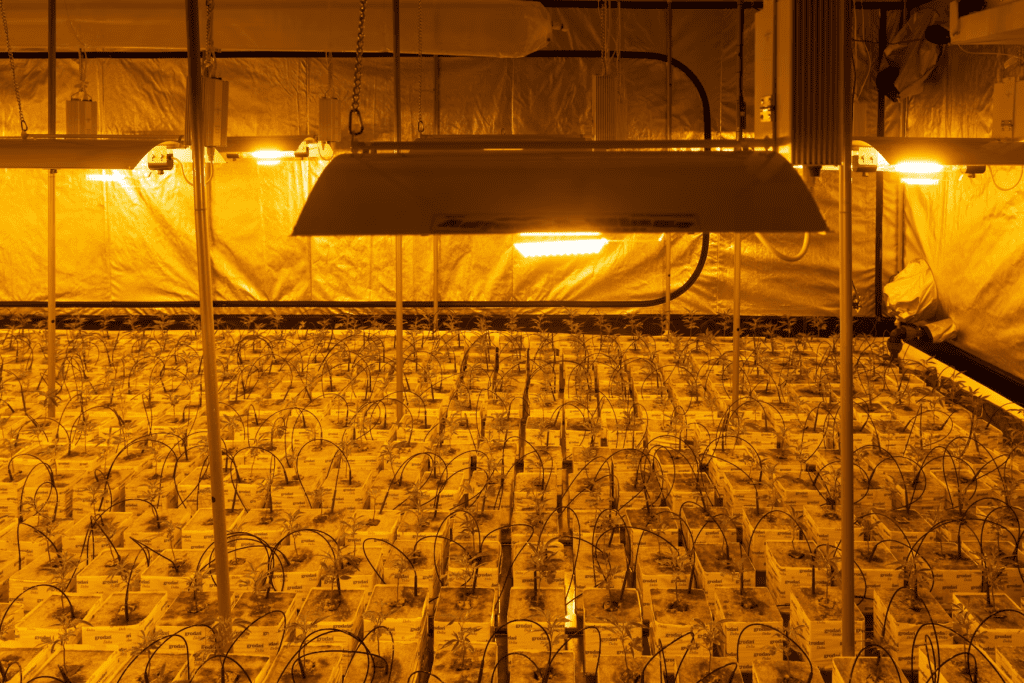Maximizing Indoor Cannabis Growth: HID vs LED Lighting

As cannabis cultivation continues to become more popular, indoor growing has emerged as a practical and efficient way to grow high-quality cannabis year-round. One of the most important factors in indoor cannabis cultivation is lighting, which can make a significant difference in plant growth, yield, and quality.
When it comes to indoor cannabis cultivation, there are two main types of lighting: high-intensity discharge (HID) and light-emitting diode (LED). Both have their pros and cons, and choosing the right lighting option will depend on a variety of factors, including budget, the size of the grow area, and the specific needs of the plants being grown.
HID Lighting for Cannabis Cultivation
HID lighting has been the go-to choice for many indoor cannabis growers for years. These lights use a bulb filled with gas that produces light when an electric current is passed through it. HID lights are known for their intense light output and are available in two main types: metal halide (MH) and high-pressure sodium (HPS).
MH bulbs are best suited for the vegetative stage of cannabis growth, as they produce a bluish-white light that mimics natural sunlight. HPS bulbs, on the other hand, are best for the flowering stage, as they produce a reddish-orange light that promotes bud development.
One of the biggest advantages of HID lighting is its affordability. HID systems are generally less expensive than LED systems, making them a popular choice for growers on a budget. Additionally, HID lights have a long lifespan, with bulbs lasting up to two years before needing replacement.
However, HID lighting does have some downsides. The bulbs generate a significant amount of heat, which can be problematic in small grow spaces. Additionally, HID lighting is not as energy-efficient as LED lighting, which can result in higher electricity costs over time.
LED Lighting for Cannabis Cultivation
LED lighting is a newer option for indoor cannabis cultivation, but it has quickly gained popularity among growers due to its energy efficiency and customizable light spectrum. LED lights use less energy than HID lights and produce less heat, making them ideal for small grow spaces and those concerned about energy costs.
One of the biggest advantages of LED lighting is its customizability. LED lights can be adjusted to produce specific wavelengths of light, which can be tailored to the specific needs of the plants being grown. Additionally, LED lights have a longer lifespan than HID lights, with bulbs lasting up to five years before needing replacement.
However, LED lighting does have some drawbacks. First, LED systems can be more expensive than HID systems, especially when considering high-end, customizable options. Additionally, LED lighting can be less intense than HID lighting, which can result in lower yields and slower plant growth.
Comparison and Breakdown of Specific Products
When it comes to choosing between HID and LED lighting for indoor cannabis cultivation, there are a variety of specific products to consider. Here are some of the top options on the market today, along with a breakdown of their features and specifications:
HID Lighting:
- VIVOSUN 1000W Double Ended High-Pressure Sodium Grow Light: This HID system is designed for use in large grow spaces and features a double-ended HPS bulb for maximum light output. It also includes a dimmable ballast for customizable light intensity and an air-cooled reflector to help dissipate heat.
- iPower 600W Digital Dimmable Electronic Ballast: This HID system includes a digital ballast that allows for precise control over light intensity, as well as a metal halide bulb for vegetative growth and an HPS bulb for flowering.
LED Lighting:
- Spider Farmer SF-2000 LED Grow Light: This LED system is designed for use in small grow spaces and includes a dimmable driver for customizable light intensity. It also features a full spectrum of light wavelengths, including red, blue, and white.
- Gavita Pro 1700e LED Grow Light: This high-end LED system includes a customizable light spectrum and a dimmable driver for precise control over light intensity. It is specifically designed for use in larger grow spaces and includes a built-in heat sink for efficient cooling.
Choosing the best lighting option for indoor cannabis cultivation depends on a variety of factors, including budget, grow space size, and specific plant needs. HID lighting is a popular and affordable choice for growers with larger grow spaces, while LED lighting offers energy efficiency and customizable light spectrums for smaller grow spaces.
However, there are advanced tips and expert advice that can help growers make the most of their lighting system. For HID lighting, it’s important to properly manage the heat generated by the bulbs. This can be achieved by placing the bulbs in air-cooled reflectors, using exhaust fans to remove hot air, and keeping the grow space well-ventilated. Additionally, growers can experiment with different bulb types and intensities to find the optimal light spectrum for their plants.
For LED lighting, it’s important to understand the different wavelengths of light and how they affect plant growth. Red light is beneficial for flowering and fruiting, while blue light is beneficial for vegetative growth. Some LED systems come with adjustable spectrums, allowing growers to fine-tune the light for their plants. Additionally, it’s important to properly manage the distance between the plants and the LED lights to avoid light burn.
Expert advice also suggests using a combination of HID and LED lighting for optimal results. HID lighting can provide the intense light needed for strong plant growth, while LED lighting can supplement with specific wavelengths of light for targeted growth stages.
When choosing specific products, it’s important to consider factors such as the quality of the bulbs, the wattage, the lifespan, and any additional features such as dimmable drivers or air-cooled reflectors. By doing proper research and choosing the right lighting system for their specific needs, growers can maximize their yield, plant quality, and overall success in indoor cannabis cultivation.